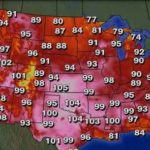Search Results
-
Ecotopia on the Fraser
I sort of hoped that the term “EcoDensity“—a word coined to describe Vancouver’s plan for new development within city limits—would grow on me. But it still sounds pretty clunky to my ears. That said, it’s a pretty apt description. If the greater Vancouver region is going to add more residents over the next few decades—as seems pretty much inevitable—by far the most environmentally friendly path is to create more housing...Read more » -
Georgia On My Mind
Here’s an interesting factoid from the Transportation Research Board’s new Commuting in America study: of all the metropolitan areas the study looked at, Seattle posted the largest percentage decline in drive-alone commuting from 1990 to 2000. It was a small drop—just 1.5 percent—but it bucked the national trend. Portland also showed a slight decline, along with San Francisco, Phoenix, and Atlanta; and four other cities, including Los Angeles, Sacramento, Dallas...Read more » -
What the Guy Next Door Could Do
What could the guy next door do if I-933—or other western property initiatives—pass on November 7? Sightline has just launched a No on 933 issue ad that shows how these initiatives could pave the way for irresponsible development and an end to many commonsense protections. Watch the ad! Forward it! If you have an extra second, go to the YouTube version and rate it! Please comment below or send feedback...Read more » -
Live Here, Live Longer
Hey, look! Someone else cares about the link between neighborhood design and public health! The Congress for the New Urbanism put out a big ol’ report, covering a lot of the same ground we went over in our most recent Cascadia Scorecard. The upshot—there are a bajillion ways that neighborhood design might affect people’s health; some of the connections are rock solid, while others are more speculative; and the big...Read more » -
The Commuter Pays Principal
The conventional wisdom is that it’s cheaper to live in the outer suburbs (ie., a long drive from jobs, stores, or schools) than closer to a town or city center. I suppose that’s true enough—if you’re looking only at the cost of housing. But if you live a long way from most of the places you want to go, you wind up driving a lot more. And that, of course,...Read more » -
Northwest States Weigh In
New report on obesity from Trust for America’s Health. The US obesity rate has risen to 32 percent—an increase from just 15 percent in 1980. And 66 percent of adults are “overweight,” a classification that also includes obesity. But one curiosity gets overlooked: national rates of adult obesity and overweight have risen almost not at all since 2000. (That’s not true for children.) See the charts on page 3 of...Read more » -
Car-less Vacation, Five Lessons
Our car-less family vacation in Vancouver, BC, was a big success. Here’s a full report, for those of you who shared your own car-lessvacation stories and are interested in such things. For the rest of you, you might want to skim the travelogue to find the five lessons I draw. The only nail-biter (if you can call it that) was the very first leg of the trip, which resembled the...Read more » -
More Measles – #21
[Note: This is part of a series on property fairness and a rash of ballot initiatives in the Northwest.] Last week, we pointed out some maps of residential development claims under Oregon’s Measure 37. And we noted that the rural land surrounding greater Portland, OR was bracing for new crop of houses. Now, Portland State University has some even better maps with much more detail on how Measure 37 is...Read more » -
City Heat
I wrote recently that global warming threatens human health in a rather prosaic way: with the warming. Heat kills. I’ve also written on the protective effects of social ties. People who have close friends, family members, and neighbors tend be healthier than those who don’t. So I was fascinated to hear of new research arguing that a portion of the 800 heat-related deaths during Chicago’s 1995 heatwave can be attributed...Read more » -
Portland's New Crop: Houses – #20
(Part of a series.) A while back we made some maps of development patterns in greater Portland, Oregon between 1990 and 2000. And we found—perhaps not too surprisingly—that Oregon’s growth management laws really were effective at protecting farmland from scattered residential development. Here’s a snapshot view, comparing the Oregon counties in the metro area with Clark County, Washington, north of the Columbia: Each purple dot represents 10 new rural residents...Read more »


